Call of Duty: WWII review
History repeats itself - and that's no bad thing
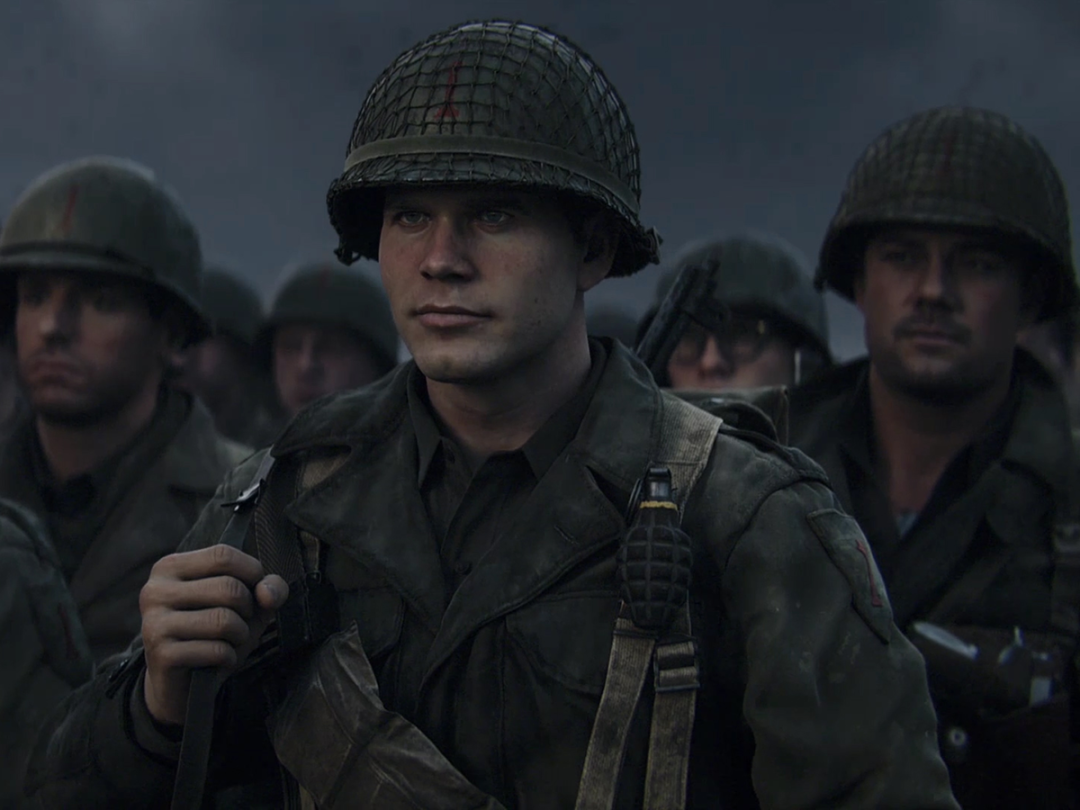
Out with the preposterous sci-fi warfare, in with good old fashioned Nazi-killing.
Having pushed the boundaries of armed conflict into outer space, the latest Call of Duty is a return to all the stuff that has made the FPS series such a blockbuster success.
Heading straight back to WWII is a tricky move to get right, though. While the past few CoD games have leapt away from the well-trodden Allies Vs Third Reich face-off, this new installment has to remain faithful to history and still be fun. Oh, and it’s got to do this while mining a near-exhausted seam that’s already provided the material for countless games and movies.
Two decades after Saving Private Ryan, Band of Brothers and the rest, Call of Duty: WWII has big boots to fill – whether they’re back on the ground or not.
A VIEW TO A KILL
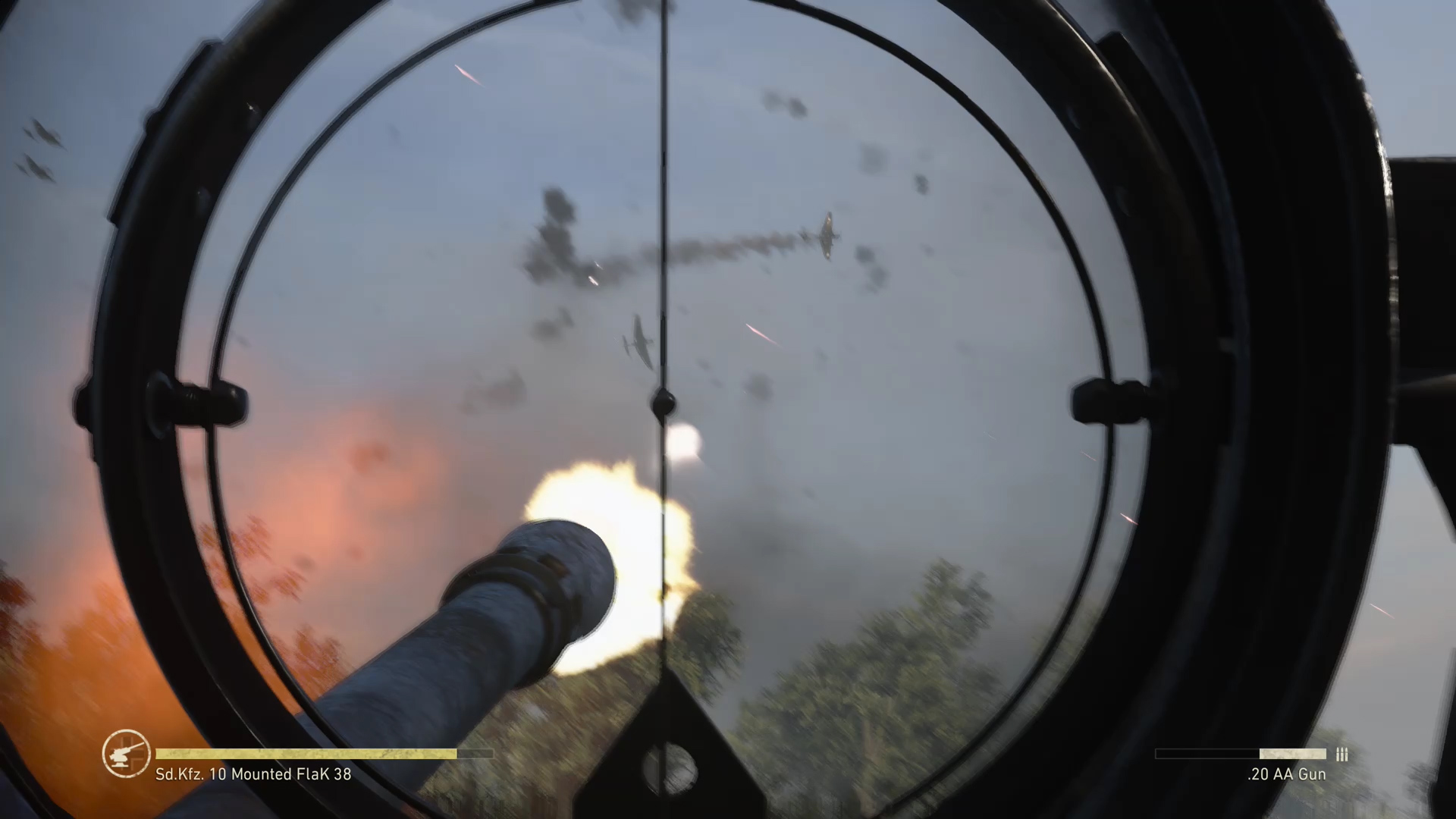
Stop me if you’ve heard this one before, but in CoD:WWII you’re playing (for the most part) an allied soldier who lands on Normandy Beach. Horrendously attacked on arrival, you force your way through the blood and gunpowder that litters the sands, then slowly form an alliance with your buddies and fight back against the Nazis.
It’s the plot of almost every World War II-themed game or movie, from 1962’s The Longest Day through 2002’s Medal Of Honor: Allied Assault and onwards into the early years of the CoD franchise, because that’s what actually happened.
In order to work, then, CoD: WWII‘s story needs to be engaging enough that you care despite the overly familiar setting. And for the most part, it is.
The characters are likeable enough, which helps. You’re mostly in control of US soldier Ronald Daniels, and spend most of your time with his crew: your best mate Robert Zussman is a cheeky but loveable wind-up merchant, your commanding officer William Pierson is the hard-nosed boss who never gives credit for your talents etc etc.
Yes, it’s all a bit cliche ridden and predictable, but at least there are characters here rather than just nameless faces. And it’s not like Band of Brothers and Saving Private Ryan didn’t go down the same route at times.
Ultimately it’s not an easy task to create a narrative within such a horrible situation, but there’s enough here to push you through to the end, at least. It’s also a story about all the allies, not just the US soldiers – so you also get to play as a French resistance fighter, for instance. This has the dual effect of making the story more interesting and keeping the gameplay fresh, with stealth sections in-between the standard shoot-them-all-bits.
VIDEO GAME, THE VIDEO GAME
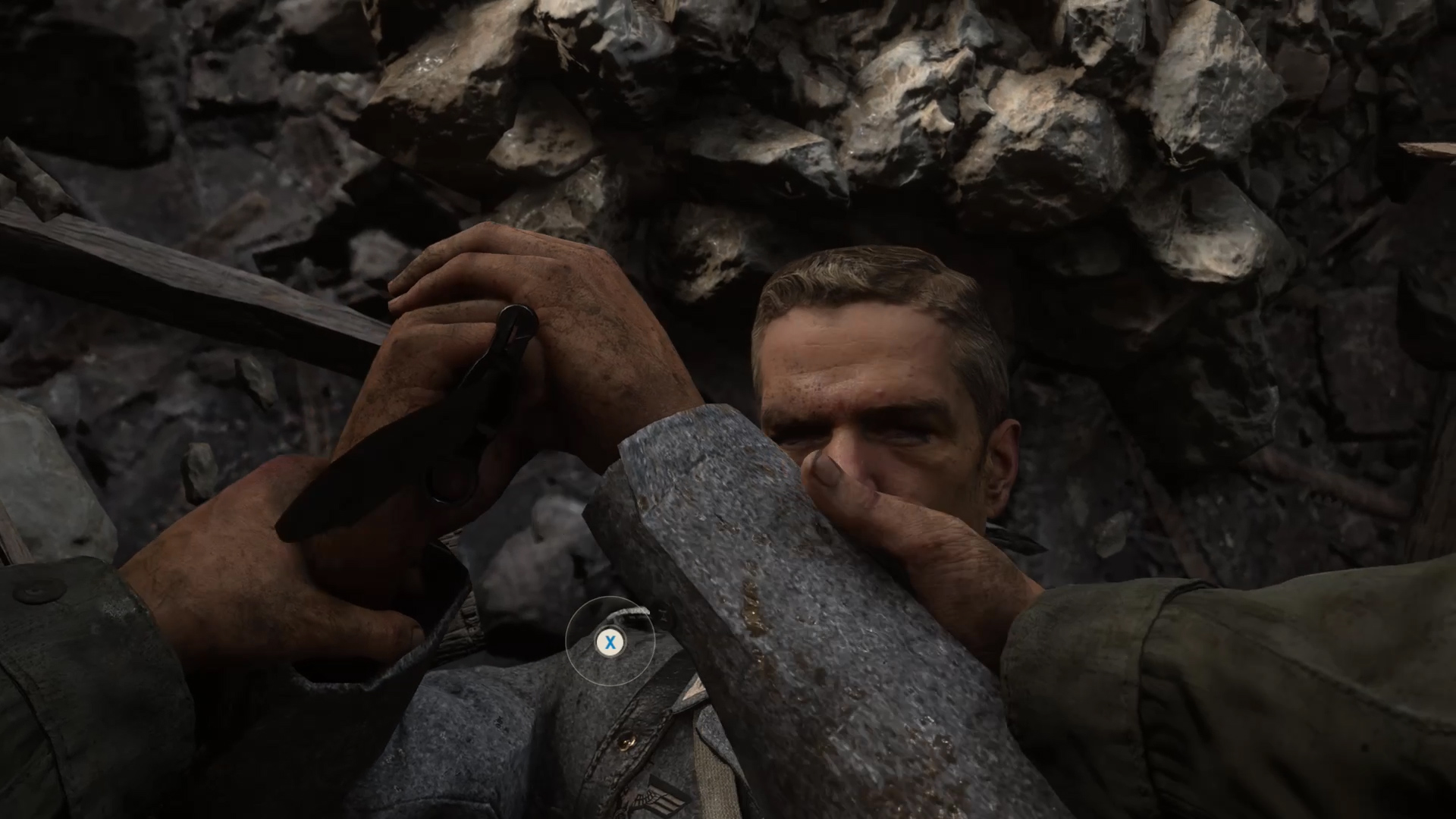
Story aside, it’s WWII‘s gameplay that makes the single-player campaign really work. And much of that is thanks mostly to the back-to-basics nature of the combat.
Gone are the future-tech weapons that allow you to spray and pray, replaced with guns that require aiming. Two in the body might put an enemy down, but one in the head will do it quicker, and you won’t be wasting precious ammo on the way.
Health packs are back, too, so there’s no amount of hiding in cover that’ll bring you back to full health. Squadmates can distribute these, along with ammo and grenades, while others can spot enemies (making them glow), or even give you a flare to light up an area for an airstrike.
There’s nuance, too, in the quieter moments. Guns aren’t always the way to end a situation, and sometimes you can finish a sequence by holding your gun on the enemy until they surrender. Even this can backfire, though. That guy you let live because he showed you a photograph of who’s waiting for him back home? What if the hatred from the conflict runs so deep he’ll shoot you in the back, even though you just spared him?
It’s all very videogamey, but it works. War is rarely as cut and dry as it appears on the surface, and these moments help remind you that soldiers, regardless of which side they’re on, are human beings, just like anyone else. That said, some moments are more successful than others. One story section that tries to evoke the same ideals of equality falls flat, mostly because it’s genuinely hard to believe that in the moment, these conversations actually happened.
While it doesn’t quite reach the emotional highs of the Battlefield 1 campaign, it’s only the quick time events in WWII that completely pull you out of the game, feeling unnecessary and, frankly, outdated. But when you are in control of the first-person action, you realise how desperately shooters needed dialling back like this. It’s simple, effective, and respects the subject matter, which is important.
NEVER WAIT FOR A GAME AGAIN
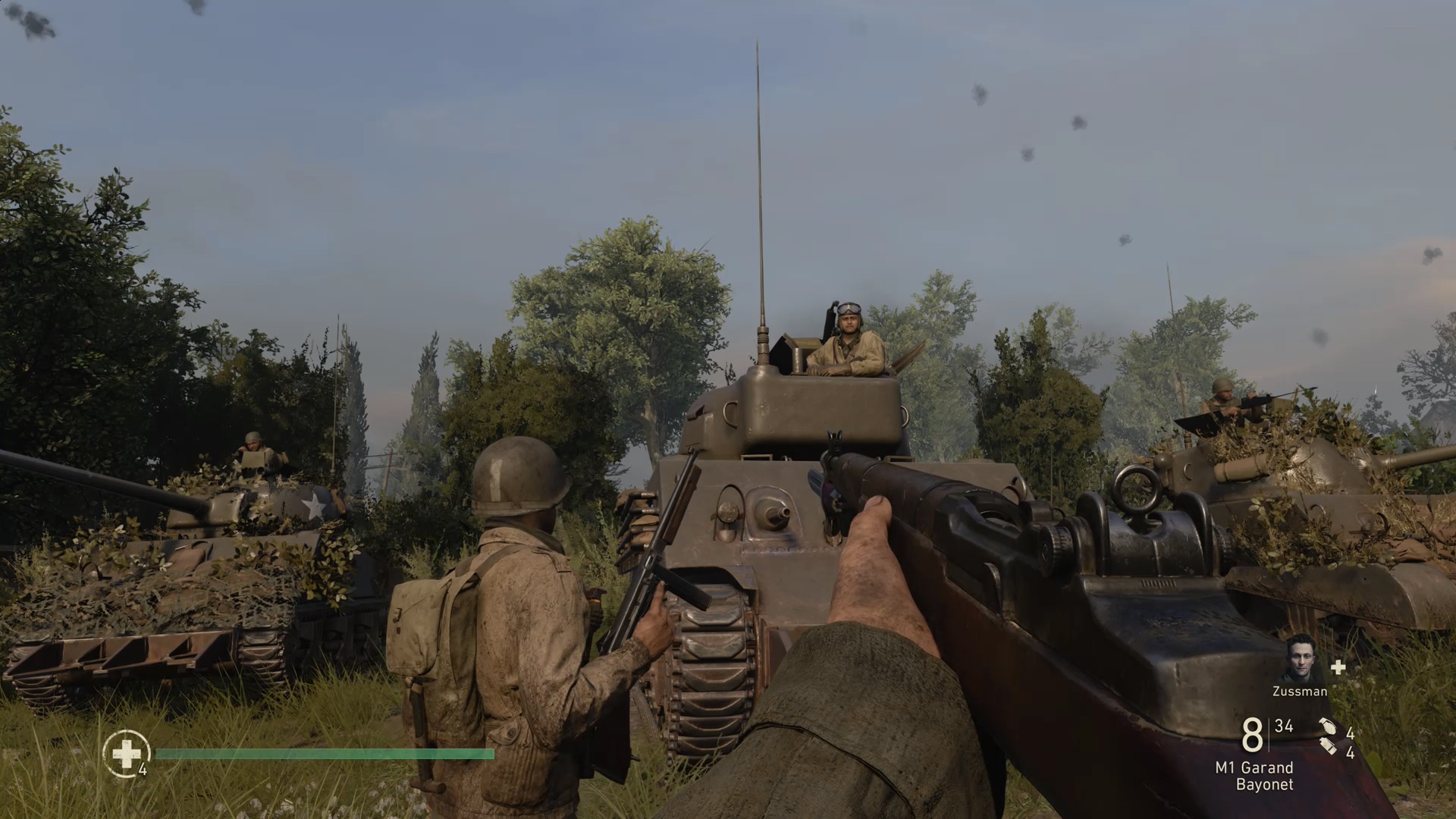
Of course online is where most people will spend most of their time, and that’s been massively improved thanks to the new Headquarters feature.
This is the wrapper for the entire multiplayer component, and replaces the wait between matches. Yes, that’s right – you’ll no longer need to just twiddle your thumbs in-between sessions. While you wait, you can now roam around HQ opening loot boxes (yes, that’s a thing, and no, it’s not as big a deal as you might think), taking part in 1v1 matches, gearing up, unlocking weapons, and generally kitting yourself out however you see fit.
While the time-to-kill is slightly reduced from last year’s Infinite Warfare, you’re still going to find yourself hanging around in here a lot, so it’s a neat addition to the series.
WAR! HUH? WHAT IS IT GOOD FOR?
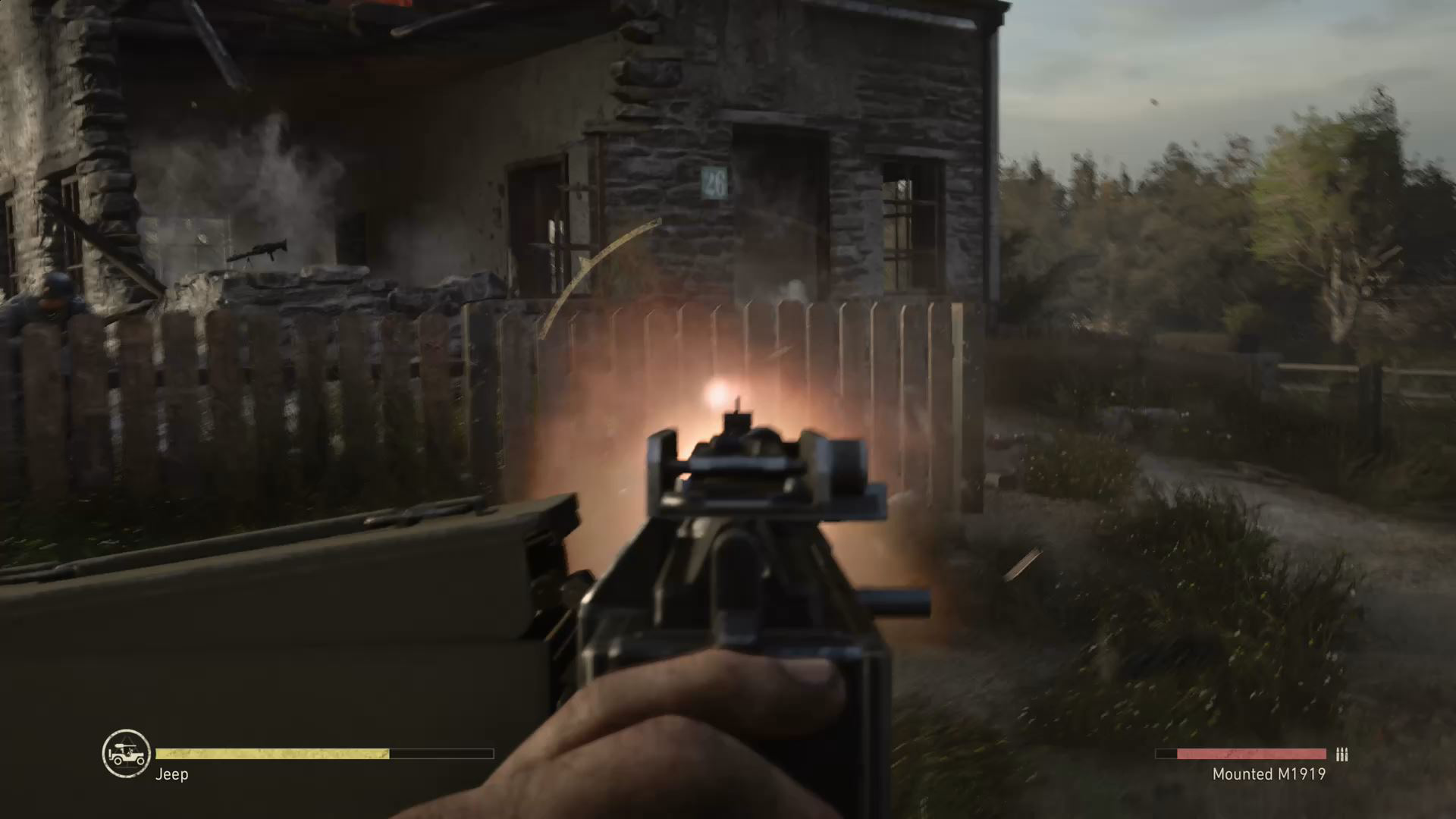
Outside of Headquarters there are a few other exciting additions to the online offering.
Gridiron is basically Uplink mode, but scaled back to be just you, guns, and a old-fashioned football that you need to score with. It’s fun, but still ultimately ends up being about kills, even if there’s slight strategy to it.
War mode, though, is perhaps the biggest draw to those who find the instant kill nature of Call of Duty hard to break into. Its USP is far larger maps, with each team having to both attack and defend an objective. The larger scale, and nature of the things you’re doing, means that even lower skilled players will get kills, and can contribute to the team by building or breaking down blockades. Dare I say it, but it’s rather Battlefield-like.
The map grows as you succeed or fail objectives, and these are longer matches too, with the final phases almost feeling like an all-out defensive push/pull – a bit like the end of an Overwatch match. There’s no score sheet showing you your kills, either: it’s about the team holding out, or pushing on. Overall it’s a fantastic addition to the series.
WTF?! HOW DID HE KILL ME?
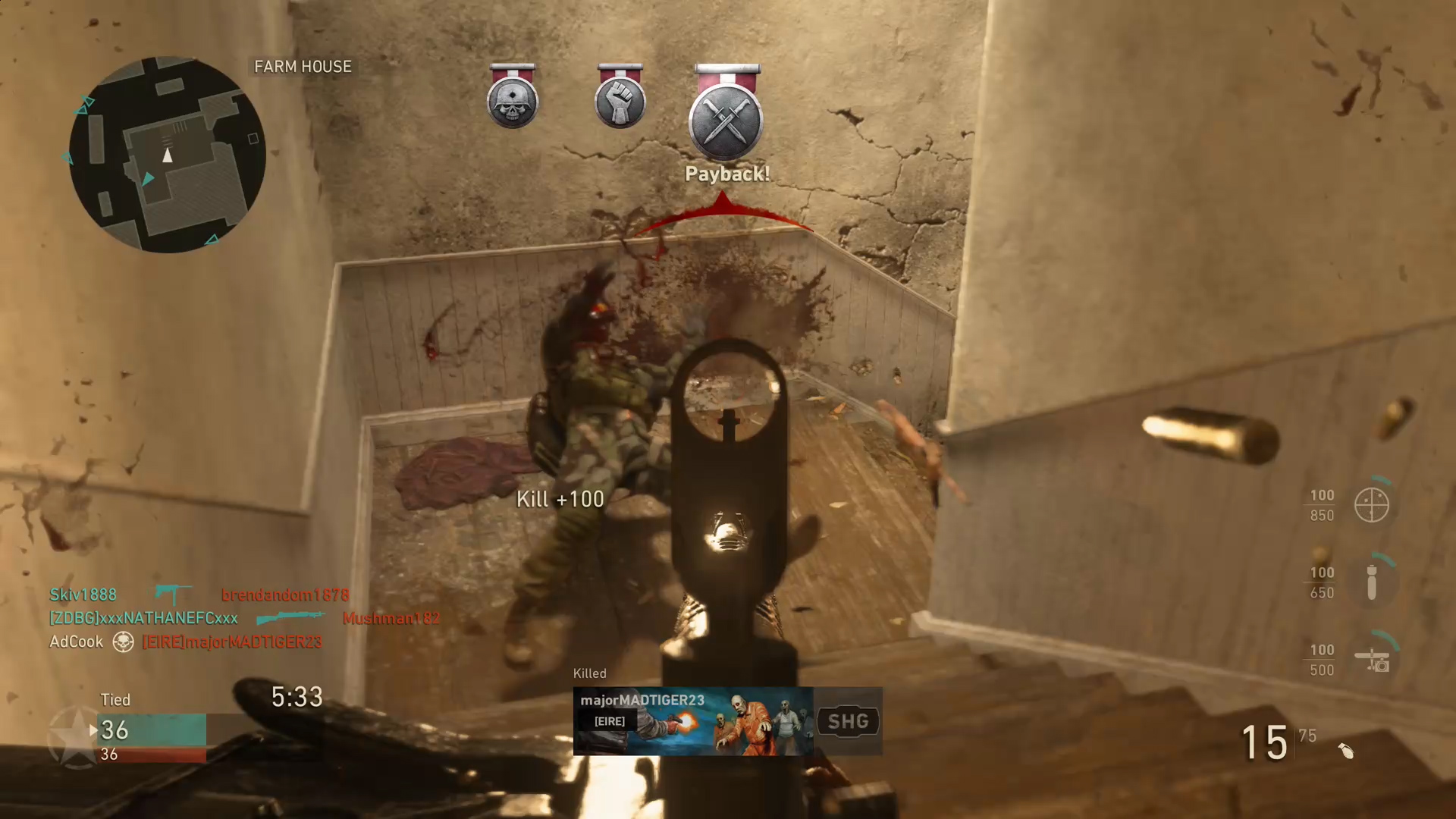
Outside of those new modes, though, it’s business as usual online. I was matched against obscenely high level players for my first matches, and these people are not messing about. Killcams still make you scream with rage, making you question if these people have some kind of sixth sense for this series. But the reliance on speed, reaction, and precision means you can get better.
Due to the theme of this year’s game, you really are just facing people who have to rely (mostly) on their guns and skills. The maps are a bit larger, and offer plenty of angles for firefights, and they’re as well designed as ever, of course.
THE HORROR… THE HORROR…
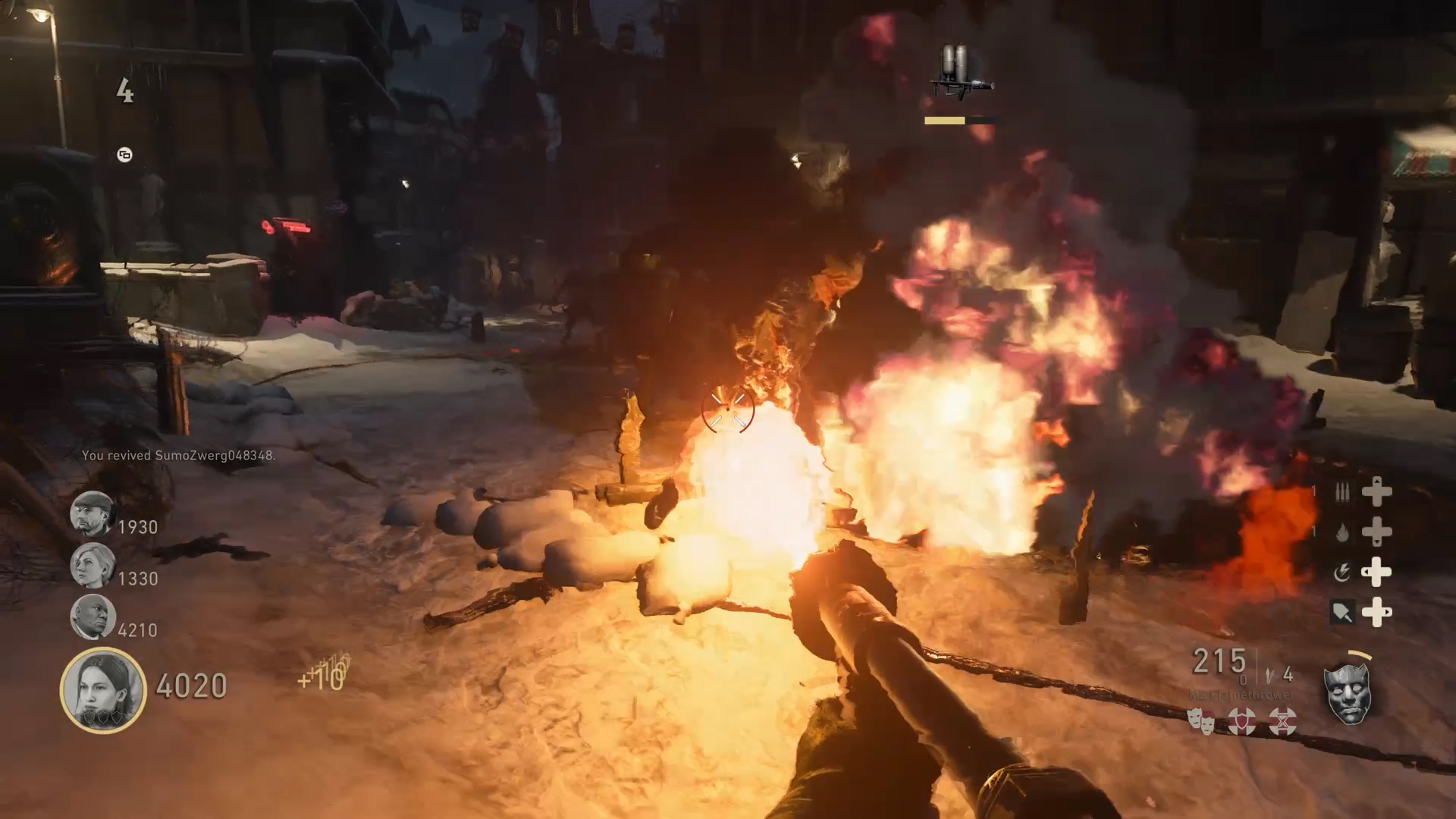
Sledgehammer founders Michael Condrey and Glen Schofield previously worked on games such as the classic Dead Space, and it shows. Nazi Zombies returns and is dark, foreboding, and actually scary. The prologue made us jump out of our chair, and sets up the story nicely.
The WWII take on the beloved Zombies mode is akin to a hero shooter, because each character has abilities that can change the tide of battle. Take the medic class, who can fill their meter and go invisible: an invaluable skill for reviving downed teammates. The zombies can’t kill you if they can’t see you.
There are perks that range from giving you a temporary flamethrower to refilling all your ammo, and this is all meshed in with the experience we’ve come to know and love. It’s brutally tough as the waves progress, of course, but we wouldn’t have it any other way.
SPEAK UP, SIR, WE WILL FIND YOU!
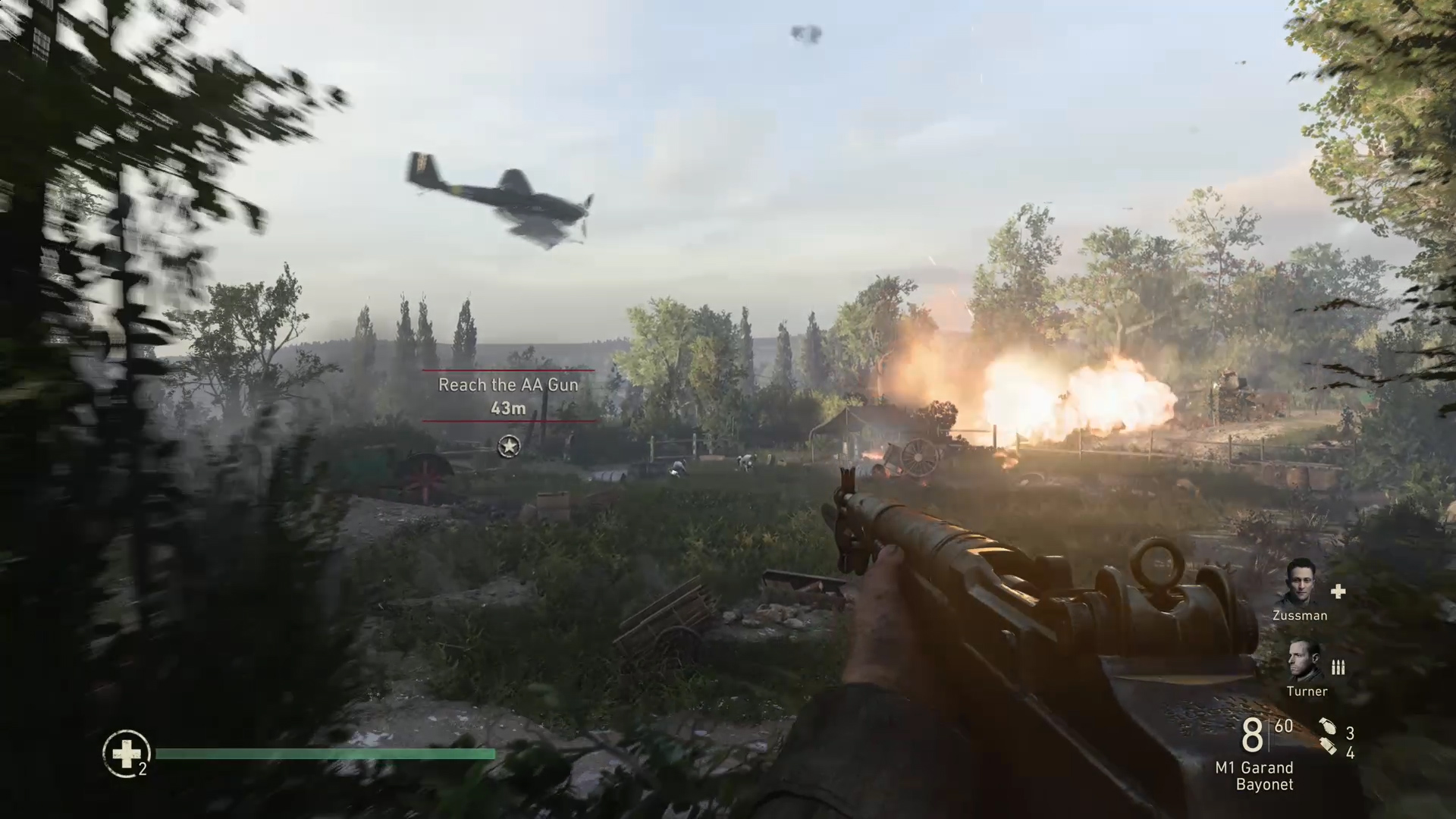
On Xbox One X (where we tested), the game runs beautifully and looks very impressive. As buildings crumble and explosions cover the screen with smoke, it’s hard not to become transfixed, especially by some very impressive lighting.
Unfortunately, we encountered multiple audio glitches. One level had a tank engine roaring over every second of the action, and we had to quit and restart to remove it. Some dialogue also cuts off, and in some cut-scenes we lost entire sections of audio. It doesn’t make the actual action any worse, but it sure does break immersion.
CALL OF DUTY: WWII VERDICT
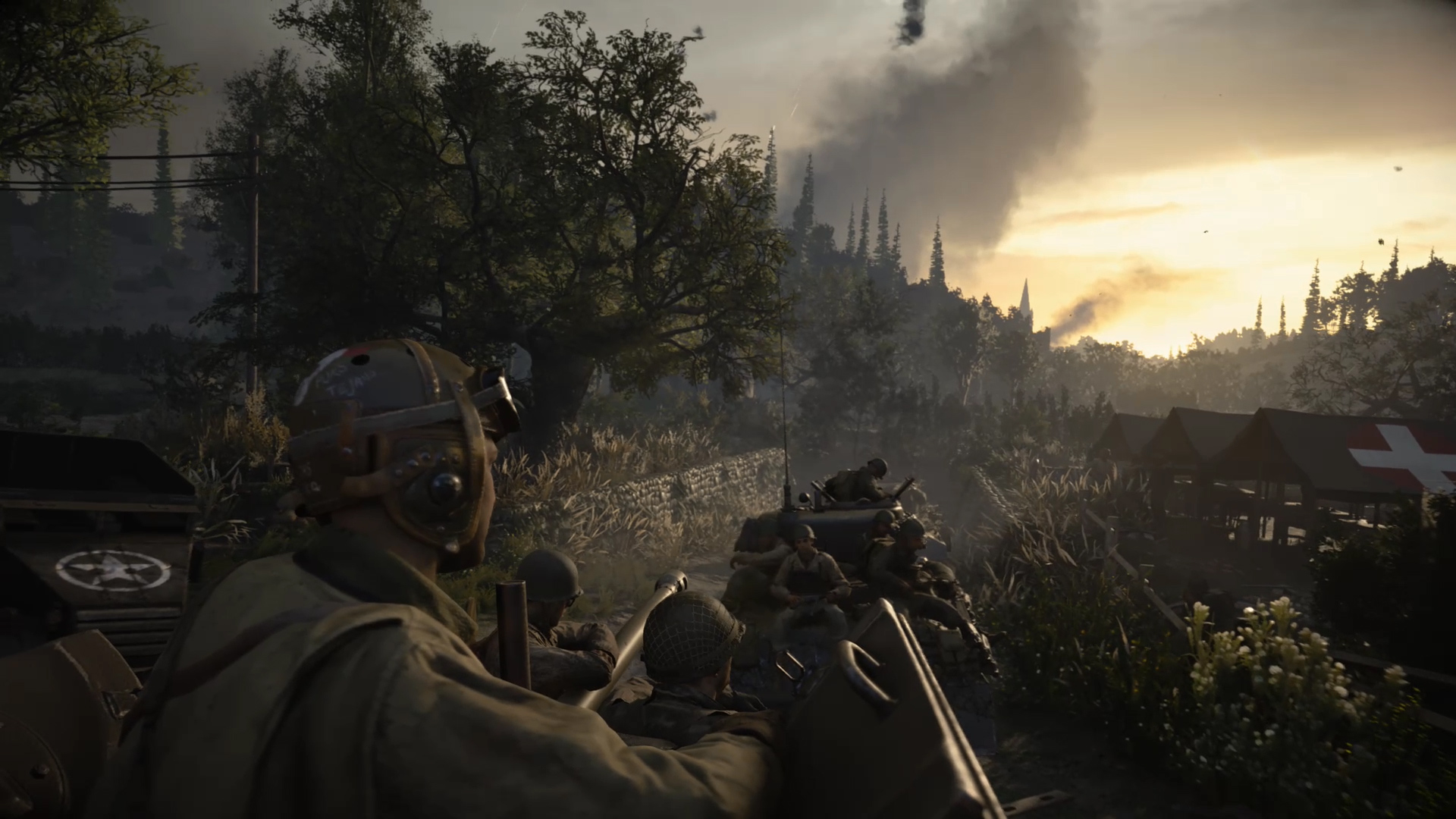
WWII is a throwback to a time before developers felt the need to cram a raft of extra features into their game. Only, everything outside the gameplay is still very much adorned with the menus, unlocks, loot boxes, and Nazi zombies you’d expect from a modern CoD.
Ultimately, CoD WWII is a game that wants to have its grizzled, back-to-basics cake and eat it too. For the most part, it gets away with walking this audacious tightrope. Underneath its ultra-visceral graphical polish is the thrilling spirit of arguably the series’ high point: Call of Duty 2. Clichés and marketing buzzwords be damned, but this really is boots-on-the-ground combat, and it’s terrific fun at that.
Where to buy
Stuff Says…
It’s fit to burst with modes and unlocks, but the star of WWII really is the back-to-basics combat
Good Stuff
Feels great to get back to simpler combat
Looks amazing
Loads of modes to get stuck in with
War mode is fantastic
Bad Stuff
Audio glitches on Xbox One X
Still an incredibly high skill ceiling online
Campaign sometimes fail to excite



